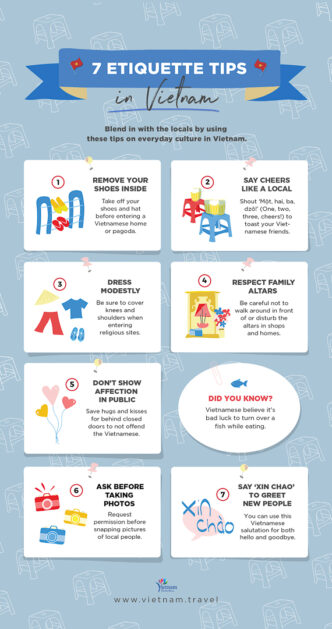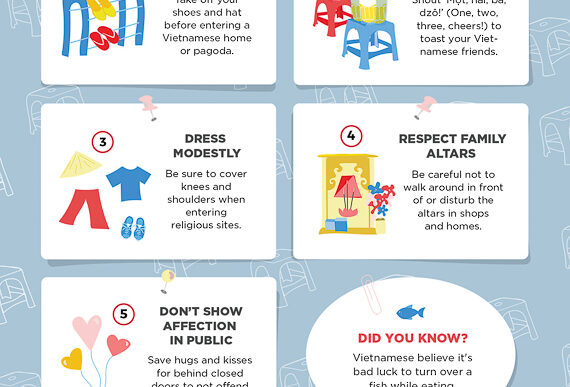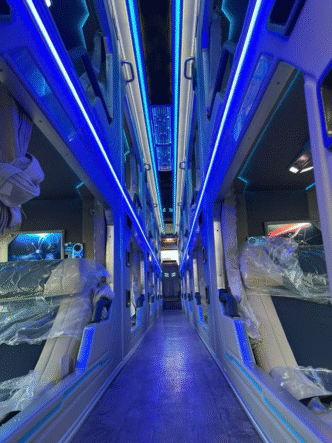Vietnam Packing Tips: Your Ultimate Guide to Travel Essentials
Traveling to Vietnam is an exciting adventure, but packing can sometimes be overwhelming. With its diverse climate, bustling cities, tranquil countryside, and beautiful coastlines, understanding what to pack for your Vietnam trip will ensure you’re prepared for any situation. In this guide, we’ll cover everything you need to bring to make your journey comfortable, efficient, and enjoyable.

1. Clothing: Dressing for Vietnam’s Climate
Vietnam has a tropical climate, meaning you’ll experience hot and humid weather year-round in most regions. However, temperatures can vary depending on the season and region, so it’s essential to pack accordingly.
-
Light, breathable fabrics such as cotton and linen are ideal for staying cool in the heat.
-
For northern Vietnam (Hanoi, Sapa), temperatures can dip in the winter, so a light jacket or sweater will be necessary.
-
In southern Vietnam (Ho Chi Minh City, Mekong Delta), it’s hot and humid most of the year, so pack shorts, t-shirts, and lightweight clothing.
-
If you’re planning on hiking or trekking in the mountainous regions, bring sturdy shoes, activewear, and a rain jacket.
Tip: Be sure to dress modestly when visiting temples or religious sites. It’s respectful to cover your shoulders and knees.
Find out more about Vietnam’s climate here.
2. Footwear: Comfort is Key
Vietnam is a country of adventure, with lots of walking, trekking, and exploring. Having the right footwear will make a huge difference in your comfort.
-
Comfortable walking shoes are a must, especially for exploring cities, temples, and rural areas.
-
Flip-flops or sandals are ideal for hot weather and relaxing by the beach.
-
If you’re planning on trekking or hiking, don’t forget to pack sturdy hiking boots for uneven terrain in regions like Sapa.

Explore the best hiking spots in Vietnam.
3. Health and Hygiene Essentials
Ensuring your health and hygiene while traveling is crucial, especially in a country with varying sanitary standards. Here’s what you’ll need:
-
Hand sanitizer and wet wipes are essential for cleaning your hands when soap and water aren’t readily available.
-
Insect repellent is a must in areas with mosquitos, particularly during the rainy season.
-
Medications for common ailments like diarrhea, headaches, and colds should be packed in your first aid kit.
-
It’s also advisable to carry antibacterial ointment and band-aids for any cuts or abrasions.
Tip: Don’t forget to pack a reusable water bottle to stay hydrated in the hot climate.
Get tips on staying healthy while traveling in Vietnam here.
4. Electronics and Travel Adapters
Vietnam operates on a 220V supply with Type A and Type C plugs. If your devices use a different plug type, be sure to bring an adapter.
-
A power bank is essential for keeping your devices charged while exploring, especially on long days of sightseeing.
-
Universal adapters are useful if you plan to travel to other countries after Vietnam.
-
Camera gear, especially if you want to capture the stunning landscapes and cultural sites of Vietnam. A smartphone with a good camera is also a handy alternative.
Tip: Vietnam has plenty of cafes and restaurants offering free Wi-Fi, so you don’t need to worry about staying connected.
Discover the best places to stay connected while traveling in Vietnam.
5. Money and Documents: Keep It Safe
Vietnam is a cash-based society, so it’s important to carry Vietnamese Dong (VND), especially when traveling to rural areas. However, credit cards are accepted in most major cities.
-
Always have small denominations of cash for taxis, local transportation, or small shops.
-
Carry a passport with a visa (if applicable) and photocopies of both for safety.
-
It’s also a good idea to bring a money belt or hidden pouch to keep your valuables safe.
Tip: ATM withdrawals are available in most major cities, but it’s a good idea to have a backup method of payment, like a credit card.

Learn about Vietnam’s visa requirements here.
6. What Not to Bring: Avoid Overpacking
Packing light is always recommended for ease of travel, but here are a few things you can leave at home when heading to Vietnam:
-
Heavy winter clothing: Unless you’re traveling to the northern highlands during the winter months, you won’t need thick jackets or heavy coats.
-
Expensive jewelry: Keep it simple and avoid bringing valuables that could be lost or stolen.
-
Large amounts of toiletries: You can find most hygiene products in local stores, so only bring essentials.
-
Non-essential electronics: Avoid packing gadgets you won’t use, such as large laptops or extra cameras.
7. Packing for Specific Activities in Vietnam
Vietnam offers a wide range of activities, and your packing will depend on what you plan to do. Here’s a breakdown of packing essentials for specific activities:
-
Trekking and Hiking: Pack sturdy hiking boots, activewear, and a light rain jacket for unexpected weather. Don’t forget a daypack for carrying essentials like water, snacks, and a camera.
-
Beach and Water Activities: If you’re heading to Phu Quoc or Da Nang, bring swimwear, sunglasses, and a sun hat. A waterproof phone case is also useful for kayaking or boat tours.
-
Cultural Exploration: When visiting temples or pagodas, pack modest clothing that covers your shoulders and knees. You might also want to bring a scarf to cover your head if necessary.
Tip: Always check the weather forecast before your trip to pack appropriately for the conditions.
Learn more about cultural etiquette in Vietnam.
Conclusion: Packing Smart for Your Vietnam Adventure
Packing for Vietnam doesn’t have to be overwhelming. By focusing on the essentials, you can ensure a smooth and enjoyable trip. Consider the climate, your activities, and the local culture to pack the right items. With a bit of preparation, you’ll be able to travel light and make the most of your Vietnamese adventure.
FAQs
1. Do I need a visa to travel to Vietnam?
Yes, most travelers will need a visa to visit Vietnam. Make sure to check the requirements based on your nationality before your trip.
2. Is it safe to drink tap water in Vietnam?
It’s not recommended to drink tap water in Vietnam. Stick to bottled water or filtered water to avoid potential stomach issues.
3. Can I use my phone in Vietnam?
Yes, most phones will work in Vietnam. You can either use international roaming or buy a local SIM card for cheaper data and calls.
4. How much money should I bring to Vietnam?
It depends on your travel style. For budget travelers, $20-$30 per day is sufficient. For a more comfortable experience, budget around $50-$100 per day.
5. What is the best time to visit Vietnam?
The best time to visit Vietnam is from September to April when the weather is generally dry and pleasant. Avoid the monsoon season (May to August) if possible.




